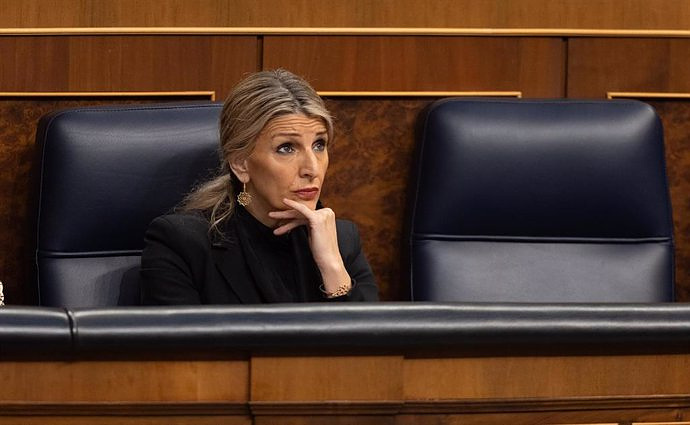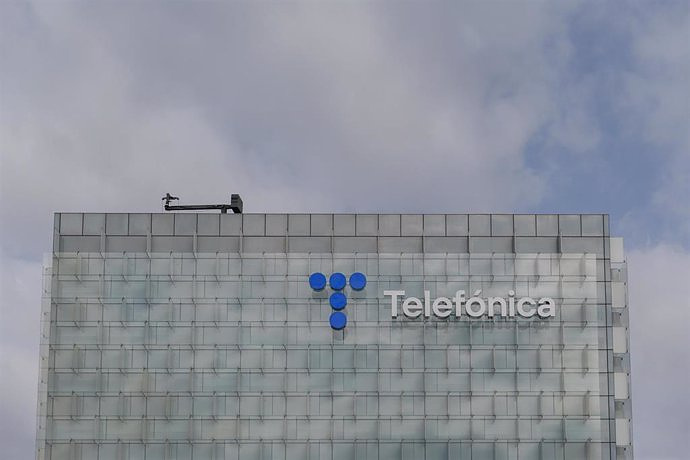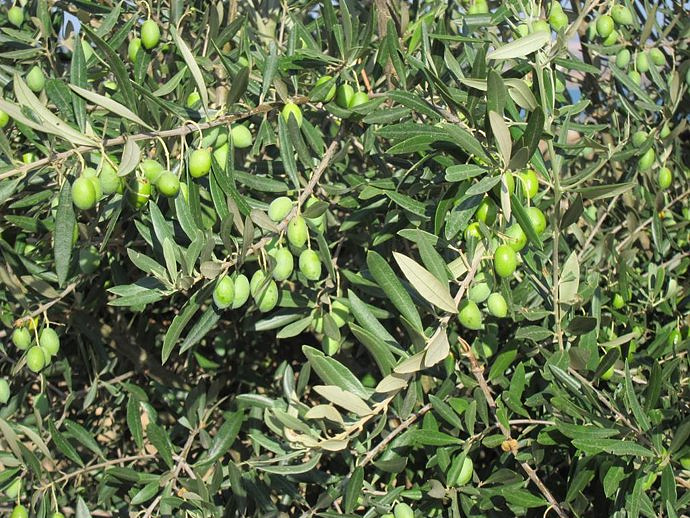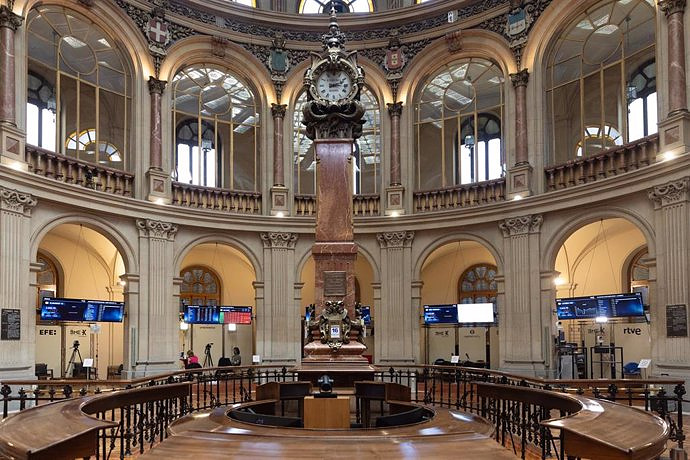MADRID, 30 Sep. (EUROPA PRESS) -
The 12-month Euribor has registered a monthly average of 2.233%, which implies reaching its maximum level since January 2009, when the index to which the majority of variable mortgages in Spain are referenced stood at 2.622%, according to the data consulted by Europa Press.
This Friday, the Euribor has registered a value in its daily rate of 2.559%, which represents an increase compared to yesterday's level, of 2.578%, although it is still below the 2.6% reached between September 27 and 28 . In this way, the provisional average for the ninth month of the year has stood at 2.233%, in the absence of the Bank of Spain confirming the data next week.
With this monthly average, the index would chain its sixth month in positive, after last April it stood at 0.013% for the first time since January 2016. In addition, it has increased in September by 0.98 points compared to August , when it stood at 1.249%.
If the monthly settlement is confirmed at this level, a person who has contracted a 30-year variable mortgage of 150,000 euros and with a differential of 0.99% plus Euribor will suffer an increase in their mortgage payment of around 200.7 euros, that is, In other words, it would go from paying 448.6 euros per month to paying 649.3 euros after the review, which is equivalent to an increase of 2,400 euros per year.
The director of Accuracy, Alberto Valle, points out that the main reason that explains the rise in this index is the expectations that banking entities have of the evolution of the reference rates set by the European Central Bank (ECB) for the coming months. "This expectation comes from a projection of high inflation until at least March 2023, from the reduction in liquidity available in the market due to the change in monetary policy by the ECB and from an increase in risks," he adds.
Therefore, it does not rule out that the index continues to rise above 2.5%, although it highlights that negative real rates continue, with -8% if the inflation data in Spain at the end of August is taken into account. In addition, he affirms that 2.5% "would continue to be a historically low rate", so that the ECB would have room to continue with its increases.
From iAhorro insists on this last idea: the mortgage comparator points out that, despite the fact that the rise in the Euribor "is not good news", the values of this indicator are not yet at the maximum levels reached during previous crises. Specifically, both in 2000 --the year of the 'dotcom' crisis-- and in 2008 --when the global financial crisis broke out--, the Euribor was above 5%. In addition, although negative values were recorded from 2016 to 2021, "it is usual for this indicator to be positive."
iSavings indicates that during 2022 there has already been a rise in the Euribor of 2.71 percentage points, since it has gone from -0.477% in January to 2.233% in this month of September. If the historical evolution of the index is analyzed, the comparator highlights that it is "the greatest rise in a year ever recorded", with three months to go until the end of the year.
The comparator's director of mortgages, Simone Colombelli, has called for calm in the face of the situation. "Although it is true that it seems that we are seeing, albeit in reverse, the same curve that marked the index between 2009 and 2008, there is no need to be alarmed, a Euribor of around 2% is normal", explained the expert, that he considers that it is still a "good time" to buy a home and "you can still find good offers on the market". "Of course, as long as a good study is made of all of them and it is compared between those given by the different banks," she added.
For the future, Colombelli prefers to be "cautious" when making predictions, since "seen what has been seen, it is almost impossible to get it right", although he believes that the real estate sector "is likely to enter a difficult moment in a few months, but not dramatic ". "What could worry us is that it reaches a maximum of 5%, as happened during the 2008 crisis. However, although it depends on what happens with the conflict between Russia and Ukraine and the macroeconomic situation, we must see that in that At that time, the bank granted mortgages very easily and the solvency that citizens are asked to grant a mortgage today is much higher from the start, so we could expect the impact to be less", clarifies the expert.
For its part, HelpMyCash expects the ECB to continue raising interest rates at its meetings scheduled for October and December, after the one applied in July --from 0% to 0.5%-- and in September --from 0 .5% to 1.25%--.
"Because of this policy, it costs banks more money to obtain financing through the ECB and they apply a higher interest rate on their interbank loans, which is what is used to calculate the Euribor," say the experts at HelpMyCash. Taking all this situation into account, the comparator forecasts that the index will close the year at 3% or above and will continue to rise in 2023.
Lastly, Hipoo's Director of Business Development, Juan Pedro Zamora, believes that "the situation in the euro zone is not going to allow a rise in the Euribor to levels of 5%, as was the case in 2008". In fact, he comments that various financial analysts are making their predictions with a Euribor that will not likely exceed 3.5% "for now".

 Exploring Cardano: Inner Workings and Advantages of this Cryptocurrency
Exploring Cardano: Inner Workings and Advantages of this Cryptocurrency Seville.- Economy.- Innova.- STSA inaugurates its new painting and sealing hangar in San Pablo, for 18 million
Seville.- Economy.- Innova.- STSA inaugurates its new painting and sealing hangar in San Pablo, for 18 million Innova.- More than 300 volunteers join the Andalucía Compromiso Digital network in one month to facilitate access to ICT
Innova.- More than 300 volunteers join the Andalucía Compromiso Digital network in one month to facilitate access to ICT Innova.-AMP.- Ayesa acquires 51% of Sadiel, which will create new technological engineering products and expand markets
Innova.-AMP.- Ayesa acquires 51% of Sadiel, which will create new technological engineering products and expand markets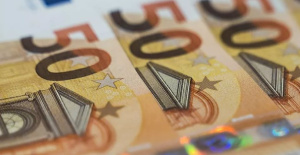 The European Parliament supports the new fiscal rules adapted to the situation by country
The European Parliament supports the new fiscal rules adapted to the situation by country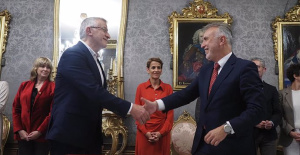 Agreement between the Government and Navarra to protect traffic competition in the community after the annulment of the Supreme Court
Agreement between the Government and Navarra to protect traffic competition in the community after the annulment of the Supreme Court Ayuso's partner proposed to the Prosecutor's Office to accept 8 months in prison and pay more than half a million euros to avoid trial
Ayuso's partner proposed to the Prosecutor's Office to accept 8 months in prison and pay more than half a million euros to avoid trial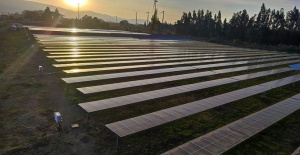 Enerside closes the sale to Chint of a 400 MW photovoltaic and storage project in Italy
Enerside closes the sale to Chint of a 400 MW photovoltaic and storage project in Italy How Blockchain in being used to shape the future
How Blockchain in being used to shape the future Not just BTC and ETH: Here Are Some More Interesting Coins Worth Focusing on
Not just BTC and ETH: Here Are Some More Interesting Coins Worth Focusing on Looking for video games that value the neighborhoods of Valencia
Looking for video games that value the neighborhoods of Valencia UPV researchers improve the efficiency of air conditioning systems using a geothermal heat pump
UPV researchers improve the efficiency of air conditioning systems using a geothermal heat pump València is committed to citiverse and smart tourism to be "the reference technological hub of the Mediterranean"
València is committed to citiverse and smart tourism to be "the reference technological hub of the Mediterranean" Valencia displays its "innovative and technological potential" at the Emerge Americas event in Miami
Valencia displays its "innovative and technological potential" at the Emerge Americas event in Miami A million people demonstrate in France against Macron's pension reform
A million people demonstrate in France against Macron's pension reform Russia launches several missiles against "critical infrastructure" in the city of Zaporizhia
Russia launches several missiles against "critical infrastructure" in the city of Zaporizhia A "procession" remembers the dead of the Calabria shipwreck as bodies continue to wash up on the shore
A "procession" remembers the dead of the Calabria shipwreck as bodies continue to wash up on the shore Prison sentences handed down for three prominent Hong Kong pro-democracy activists
Prison sentences handed down for three prominent Hong Kong pro-democracy activists ETH continues to leave trading platforms, Ethereum balance on exchanges lowest in 3 years
ETH continues to leave trading platforms, Ethereum balance on exchanges lowest in 3 years Investors invest $450 million in Consensys, Ethereum incubator now valued at $7 billion
Investors invest $450 million in Consensys, Ethereum incubator now valued at $7 billion Alchemy Integrates Ethereum L2 Product Starknet to Enhance Web3 Scalability at a Price 100x Lower Than L1 Fees
Alchemy Integrates Ethereum L2 Product Starknet to Enhance Web3 Scalability at a Price 100x Lower Than L1 Fees Mining Report: Bitcoin's Electricity Consumption Declines by 25% in Q1 2022
Mining Report: Bitcoin's Electricity Consumption Declines by 25% in Q1 2022 Oil-to-Bitcoin Mining Firm Crusoe Energy Systems Raised $505 Million
Oil-to-Bitcoin Mining Firm Crusoe Energy Systems Raised $505 Million Microbt reveals the latest Bitcoin mining rigs -- Machines produce up to 126 TH/s with custom 5nm chip design
Microbt reveals the latest Bitcoin mining rigs -- Machines produce up to 126 TH/s with custom 5nm chip design Bitcoin's Mining Difficulty Hits a Lifetime High, With More Than 90% of BTC Supply Issued
Bitcoin's Mining Difficulty Hits a Lifetime High, With More Than 90% of BTC Supply Issued The Biggest Movers are Near, EOS, and RUNE during Friday's Selloff
The Biggest Movers are Near, EOS, and RUNE during Friday's Selloff Global Markets Spooked by a Hawkish Fed and Covid, Stocks and Crypto Gain After Musk Buys Twitter
Global Markets Spooked by a Hawkish Fed and Covid, Stocks and Crypto Gain After Musk Buys Twitter Bitso to offset carbon emissions from the Trading Platform's ERC20, ETH, and BTC Transactions
Bitso to offset carbon emissions from the Trading Platform's ERC20, ETH, and BTC Transactions Draftkings Announces 2022 College Hoops NFT Selection for March Madness
Draftkings Announces 2022 College Hoops NFT Selection for March Madness

